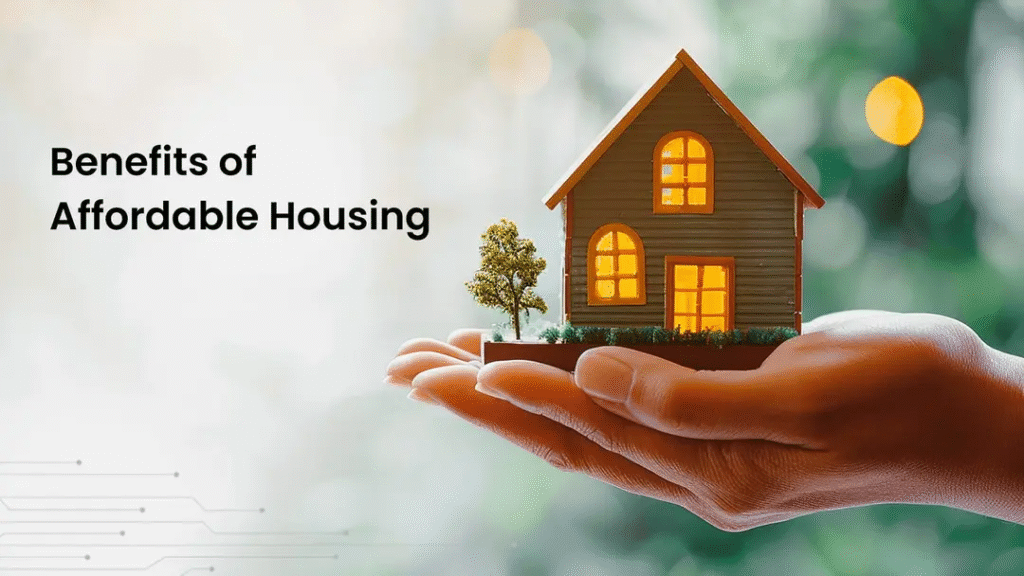Now Reading: Why Affordable Housing Is Still Out of Reach for Many
-
01
Why Affordable Housing Is Still Out of Reach for Many
Why Affordable Housing Is Still Out of Reach for Many

In many parts of the world, finding a safe and affordable place to live has become harder than ever. Rising home prices, limited land, and high construction costs are making it difficult for low- and middle-income families to secure housing. As rents and mortgage rates increase, millions are being pushed out of cities and forced to live farther from work, school, and essential services.
Affordable housing is not just a personal problem—it’s a national crisis.
What Is Affordable Housing?

Affordable housing means a home where the cost of rent or mortgage is not more than 30% of a person’s income. When people pay more than this, they may struggle to afford other basic needs like food, healthcare, or education. Yet, for many families today, spending 40% or even 50% of their income on housing is becoming the new normal.
Why Is Affordable Housing Hard to Find?

There are several reasons why affordable housing is in short supply:
- High Construction Costs
Building new homes is expensive. Prices for materials like cement, steel, and lumber have gone up. Labor shortages also slow down construction. - Lack of Available Land
In cities, land is scarce and costly. Developers often choose to build luxury apartments instead of low-cost housing to make more profit. - Strict Zoning Laws
Many cities have rules that limit how land can be used. These laws can stop developers from building high-density or multi-family homes, which are often more affordable. - Rising Demand
More people are moving into cities for work and better opportunities. This adds pressure to the housing market and drives up prices. - Wages Not Keeping Up
While rent prices have increased, many people’s wages have not. This gap makes it harder for families to afford decent homes.
Who Is Affected?
Affordable housing issues affect a wide range of people:
- Low-income families who often face eviction or homelessness.
- Middle-income workers, such as teachers, nurses, and retail employees, who cannot afford to live near their jobs.
- Young adults and students who delay moving out or live in overcrowded homes.
- Seniors on fixed incomes who may struggle with rent increases.
Even people with full-time jobs can end up in unstable living conditions due to high costs.
Real-Life Example: A Growing Problem in Cities

In cities like New York, San Francisco, and London, the average rent for a one-bedroom apartment can be more than half of a worker’s monthly income. In smaller cities and towns, the problem still exists but is often hidden. People may live in poor conditions, share small spaces, or travel long distances daily to afford rent.
What Are the Solutions?
The good news is that many governments, non-profits, and private companies are trying new ideas to solve the problem.
1. Build More Affordable Units
One of the biggest solutions is simply building more homes. Governments can offer tax breaks or funding to developers who agree to build low-cost units. Cities can also convert unused land or buildings, like old schools or warehouses, into housing.
2. Change Zoning Laws
Cities can update zoning rules to allow for more mixed-use developments and multi-family units. This helps create diverse communities and lowers housing prices.
3. Support Rent Control and Assistance
Some cities have rent control laws to limit how much landlords can increase rent each year. Housing vouchers and government subsidies also help families cover part of their rent.
4. Invest in Modular and Prefabricated Housing
These homes are built off-site and then transported to the final location. They are faster and cheaper to produce, making them a good option for affordable housing projects.
5. Encourage Public-Private Partnerships
Working together, governments and businesses can create more housing faster. For example, a city might offer free land if a developer agrees to build a certain number of affordable units.
6. Protect Tenants from Eviction
Tenant protection laws help prevent unfair evictions and give renters more stability. Legal aid services can also support tenants in understanding their rights.
How Can Individuals Help?
Even if you’re not in a position to build homes or change laws, there are still ways to support the cause:
- Support organizations that build or manage affordable housing.
- Vote for policies and leaders that prioritize housing solutions.
- Attend local council meetings to push for better housing plans.
- Spread awareness by sharing stories or starting community projects.
Looking Ahead
Affordable housing will remain a key issue in the years to come. As the world continues to urbanize, and as populations grow, the demand for housing will only increase. The challenge is big, but with the right mix of policy, innovation, and community effort, it can be solved.
Providing affordable housing is not just about roofs and walls—it’s about dignity, opportunity, and creating strong, stable communities for everyone.






















